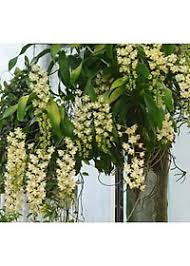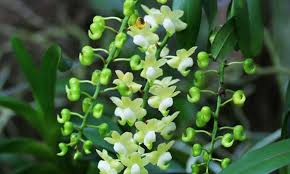
The White Egg Orchid, scientifically known as *Dendrobium crumenatum*, is a stunning epiphytic plant celebrated for its delicate, fragrant flowers. Native to Southeast Asia, this orchid is not only beautiful but also remarkably resilient, making it an ideal choice for urban gardeners. Whether you have a small balcony or a spacious rooftop garden, the White Egg Orchid can thrive in these environments with the right care and attention. This comprehensive guide will explore the characteristics of the White Egg Orchid, the benefits of growing it in urban settings, and the steps to successfully cultivate this delightful flower.
## Table of Contents
1. Introduction to White Egg Orchid
– 1.1 Characteristics of the White Egg Orchid
– 1.2 The Significance of the White Egg Orchid
2. Why Grow White Egg Orchids on Balconies and Rooftops?
– 2.1 Space Efficiency
– 2.2 Air Quality Improvement
– 2.3 Aesthetic Appeal
3. Choosing the Right Location
– 3.1 Sunlight Requirements
– 3.2 Wind Protection
– 3.3 Humidity Considerations
4. Essential Supplies for Growing White Egg Orchids
– 4.1 Containers and Potting Mix
– 4.2 Fertilizers and Nutrients
– 4.3 Watering Tools
5. Step-by-Step Guide to Growing White Egg Orchids
– 5.1 Planting the Orchid
– 5.2 Watering Techniques
– 5.3 Fertilization Schedule
– 5.4 Pruning and Maintenance
6. Common Challenges and Solutions
– 6.1 Pests and Diseases
– 6.2 Environmental Stress
7. Seasonal Care for White Egg Orchids
– 7.1 Spring
– 7.2 Summer
– 7.3 Fall
– 7.4 Winter
8. Conclusion
—
## 1. Introduction to White Egg Orchid
### 1.1 Characteristics of the White Egg Orchid
The White Egg Orchid is known for its elegant appearance, featuring slender stems adorned with clusters of pure white flowers. Each flower has a unique, egg-shaped structure that gives the orchid its name. The blooms emit a pleasant fragrance, particularly in the evening, attracting pollinators such as bees and butterflies.
– **Growth Habit:** The plant can grow up to 60 cm tall, producing multiple stems that branch out, creating a bushy appearance.
– **Leaves:** The leaves are narrow and leathery, typically dark green in color, which helps the plant retain moisture.
### 1.2 The Significance of the White Egg Orchid
In many cultures, the White Egg Orchid symbolizes purity, beauty, and new beginnings. It is often used in floral arrangements and decorations for special occasions, adding a touch of elegance to weddings, anniversaries, and other celebrations. Furthermore, its ability to adapt to various environments makes it a favored choice among gardeners.
—
## 2. Why Grow White Egg Orchids on Balconies and Rooftops?
### 2.1 Space Efficiency
Urban areas often have limited space for gardening. The White Egg Orchid’s compact size makes it suitable for balconies and rooftops, where it can thrive in pots or hanging baskets. Its vertical growth habit allows gardeners to maximize space, creating a beautiful display without taking up too much room.
### 2.2 Air Quality Improvement
Plants, including orchids, play a crucial role in improving air quality. By absorbing carbon dioxide and releasing oxygen, the White Egg Orchid can contribute to a healthier urban environment. Additionally, its foliage can help filter pollutants, making it a valuable addition to any balcony or rooftop garden.
### 2.3 Aesthetic Appeal
The White Egg Orchid’s stunning blooms can transform any outdoor space into a vibrant oasis. Its elegant flowers provide a striking contrast against lush green foliage, making it an eye-catching feature on balconies and rooftops. Furthermore, the fragrance of the flowers can enhance the overall sensory experience of the space.
—
## 3. Choosing the Right Location
### 3.1 Sunlight Requirements
To thrive, the White Egg Orchid requires bright, indirect sunlight. Ideally, it should receive 4-6 hours of filtered light daily. South-facing balconies or rooftops with partial shade during the hottest parts of the day are excellent choices for growing these orchids.
### 3.2 Wind Protection
High winds can be detrimental to orchids, causing damage to the delicate flowers and stems. When selecting a location, consider areas that offer some protection from strong winds, such as corners or spaces near walls. Using windbreaks, like trellises or screens, can also help shield the orchids from harsh weather.
### 3.3 Humidity Considerations
Orchids thrive in humid environments, and maintaining adequate humidity levels is essential for their health. On balconies and rooftops, humidity can fluctuate significantly. To create a suitable microclimate for the White Egg Orchid:
– **Misting:** Regularly mist the plants to increase humidity, especially during dry seasons.
– **Pebble Trays:** Place pots on trays filled with pebbles and water to enhance humidity without waterlogging the roots.
—
## 4. Essential Supplies for Growing White Egg Orchids
### 4.1 Containers and Potting Mix
Choosing the right container and potting mix is vital for the health of the White Egg Orchid.
– **Containers:** Opt for pots with drainage holes to prevent waterlogging. Hanging baskets can also create a beautiful display while providing adequate drainage.
– **Potting Mix:** Use a well-draining orchid mix, which typically contains bark, perlite, and sphagnum moss. This mix allows for proper aeration and moisture retention.
### 4.2 Fertilizers and Nutrients
To support healthy growth and flowering, the White Egg Orchid requires regular feeding. Use a balanced, water-soluble fertilizer formulated for orchids.
– **Fertilization Schedule:** Fertilize every 2-4 weeks during the growing season (spring and summer) and reduce feeding in fall and winter when the plant is dormant.
### 4.3 Watering Tools
Proper watering is crucial for the health of the White Egg Orchid. Use the following tools:
– **Watering Can:** A can with a narrow spout allows for precise watering, helping you avoid over-saturating the plant.
– **Moisture Meter:** This tool can help monitor soil moisture levels, ensuring that you water only when necessary.
—
## 5. Step-by-Step Guide to Growing White Egg Orchids
### 5.1 Planting the Orchid
1. **Select a Healthy Plant:** Choose a healthy White Egg Orchid from a reputable nursery or garden center.
2. **Prepare the Pot:** Fill the chosen container with the orchid potting mix, leaving enough space at the top for the plant.
3. **Plant the Orchid:** Gently remove the orchid from its original pot and loosen any tightly bound roots. Place the orchid in the new pot and fill around the roots with potting mix, ensuring the crown (where the leaves meet the roots) is level with the soil surface.
4. **Water Thoroughly:** After planting, water the orchid thoroughly, allowing excess water to drain from the bottom of the pot.
### 5.2 Watering Techniques
– **Watering Frequency:** Water the White Egg Orchid when the top inch of the potting mix feels dry. This could be every 5-10 days, depending on the weather and humidity levels.
– **Avoid Overwatering:** Orchids are susceptible to root rot, so it’s crucial to ensure the potting mix dries out between waterings.
### 5.3 Fertilization Schedule
– **Growing Season (Spring and Summer):** Apply a balanced orchid fertilizer every 2-4 weeks, following the manufacturer’s instructions.
– **Dormant Season (Fall and Winter):** Reduce fertilization frequency to once every 6-8 weeks, as the plant will not actively grow during this time.
### 5.4 Pruning and Maintenance
– **Pruning Dead Blooms:** After the flowering period, cut back any dead flower spikes to encourage new growth.
– **Inspect for Pests:** Regularly check the plant for signs of pests, such as mealybugs or spider mites, and treat any infestations promptly.
—
## 6. Common Challenges and Solutions
### 6.1 Pests and Diseases
– **Common Pests:** Mealybugs, aphids, and spider mites are common pests that can affect White Egg Orchids.
– **Control Methods:** Use insecticidal soap or neem oil to treat infestations. Regularly inspect the leaves and stems for signs of pests.
### 6.2 Environmental Stress
– **Leaf Dropping:** If the leaves start to drop, it may be due to environmental stress, such as changes in temperature or humidity. Ensure the plant is in a stable environment with adequate humidity levels.
– **Flower Drop:** Premature flower drop can occur due to overwatering or insufficient light. Adjust watering practices and ensure the plant receives enough indirect sunlight.
—
## 7. Seasonal Care for White Egg Orchids
### 7.1 Spring
– **Re-potting:** Spring is an ideal time for re-potting if the plant has outgrown its container.
– **Increase Fertilization:** Begin regular fertilization to promote growth and flowering.
### 7.2 Summer
– **Monitor Watering:** Higher temperatures may require more frequent watering. Keep an eye on the moisture levels in the pot.
– **Provide Shade:** During extremely hot days, consider providing some shade to prevent leaf burn.
### 7.3 Fall
– **Reduce Fertilization:** As the
plant enters dormancy, decrease the frequency of fertilization.
– **Prepare for Cooler Weather:** Ensure that the orchid is protected from cold drafts and excessive rain.
### 7.4 Winter
– **Watering:** Water less frequently during the winter months, allowing the potting mix to dry out more thoroughly between waterings.
– **Humidity Maintenance:** Keep humidity levels up by misting or using a humidifier, especially in dry indoor environments.
—
## 8. Conclusion
The White Egg Orchid is a beautiful and easy-to-grow flower that can thrive on balconies and rooftops, making it an excellent choice for urban gardeners. With its elegant blooms, delightful fragrance, and ability to improve air quality, this orchid can transform any outdoor space into a stunning oasis. By following the guidelines outlined in this article, you can successfully cultivate the White Egg Orchid and enjoy its beauty for years to come. Embrace the joy of gardening, even in limited spaces, and let the White Egg Orchid bring a touch of nature to your urban lifestyle.
Whether you’re an experienced gardener or a beginner, the White Egg Orchid is sure to provide a rewarding gardening experience that enhances both your home and your well-being.


